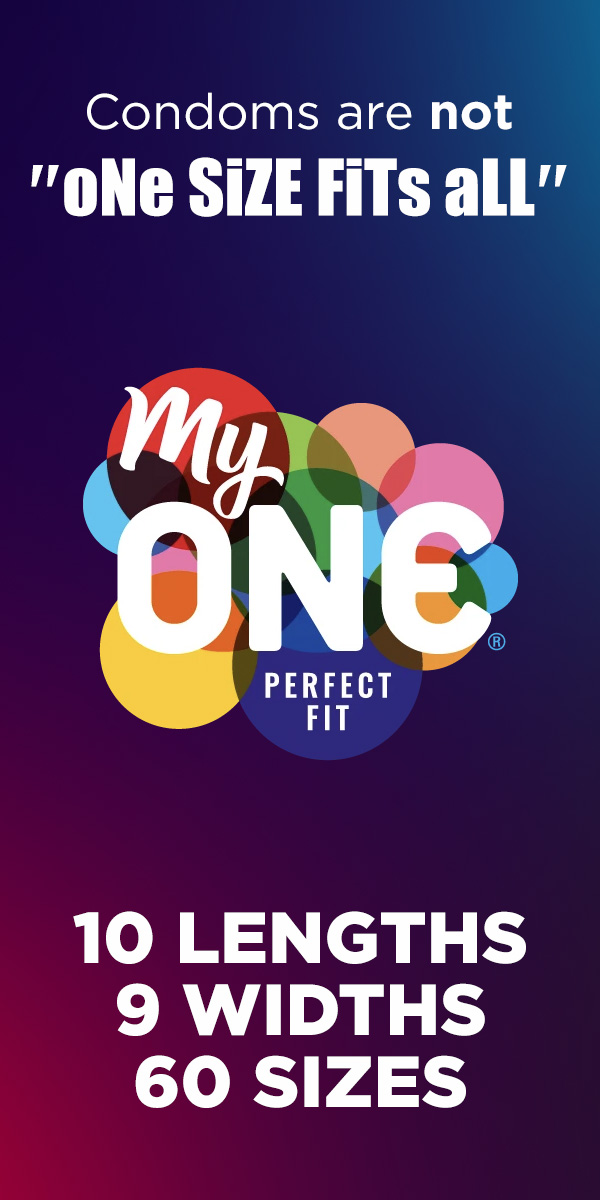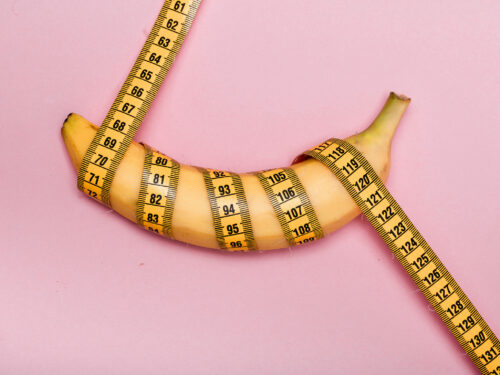
Good data management is the key to the success of any scientific endeavor. If the data is poorly handled, it basically invalidates the conclusions of all that work. Such diligence is why we can trust many studies out there, and conversely it can consign other studies to irrelevance.
That latter category is where we find one of the more recent penis size studies, a meta-analysis of dozens of earlier penis size studies that came to a shocking conclusion: in the last 29 years the average penis size has grown 24%! It made headlines all around the world, because there's nothing that gets more clicks than that, but… it's all wrong.
The study in question is "Worldwide Temporal Trends in Penile Length: A Systematic Review and Meta-Analysis" from a team of Urologists in Italy and the United States led by urologist Federico Belladelli, and the biggest issue with it is the same problem that killed the reliability of the Veale 2015 study (you know, the one that said the global average is 5.1"): they mixed bone-pressed and non-bone-pressed figures, dramatically skewing the results.
Let's take a look at the data they used (BP: bone-pressed length, NBP: non-bone-pressed)
| Researcher | Year | Region | BP (cm) | NBP (cm) |
|---|---|---|---|---|
| Barry1 | 1981 | North America | 14.11 | |
| Money2 | 1984 | North America | 16.19 | |
| Ajmani3 | 1985 | Africa | N/A | |
| Chen4 | 1992 | Asia | 9.55 | |
| Bondil | 1992 | Europe | 16.74 | |
| de Goes5 | 1992 | Europe | 17.84 | |
| Siminoski6 | 1993 | North America | 9.40 | |
| da Ros | 1994 | South America | 14.31 | |
| Wessells | 1996 | North America | 15.74 | |
| Smith18 | 1998 | Australia | 15.71 | |
| Bogaert18 | 1999 | North America | 16.00 | |
| Chen | 2000 | Middle East | 13.60 | |
| Ansell7 | 2001 | North America | 14.98 | |
| Ponchietti | 2001 | Europe | 12.50 | |
| Schneider | 2001 | Europe | 14.48 | |
| Shah | 2002 | Europe | 13.00 | |
| Mondaini8 | 2002 | Europe | 12.50 | |
| Sengezer9 | 2002 | Europe | 12.73 | |
| Da Silva10 | 2002 | South America | 20.50 | |
| Son | 2003 | Asia | 9.60 | |
| Savoie | 2003 | North America | 13.50 | |
| Perugia19 | 2005 | Europe | 12.90 | |
| Spyropoulos | 2005 | Europe | 12.18 | |
| Orakwe | 2006 | Africa | 13.37 | |
| Promodu | 2007 | Asia | 10.88 | |
| Dalkin19 | 2007 | North America | 12.70 | |
| Halioglu19 | 2007 | Europe | 14.00 | |
| Köhler19 | 2007 | North America | 12.89 | |
| Gontero19 | 2007 | Europe | 11.02 | |
| Mehraban | 2007 | Middle East | 11.58 | |
| Hosseini | 2007 | Middle East | 13.01 | |
| Kamel | 2009 | Middle East | 12.90 | |
| Savas | 2009 | Europe | 13.44 | |
| Schlomer | 2010 | North America | 14.30 | |
| Tomova11 | 2010 | Europe | N/A | |
| Choi | 2011 | Asia | 11.70 | |
| Nikoobakht12 | 2011 | Middle East | 11.50 | |
| Engel | 2011 | North America | 11.77 | |
| Park13, 18 | 2011 | Asia | 10.76 | |
| Aslan | 2011 | Europe | 13.70 | |
| Awwad14 | 2011 | Middle East | N/A | |
| Söylemez | 2012 | Europe | 13.98 | |
| Vasconcelos19 | 2012 | South America | 16.00 | |
| Khan | 2012 | Europe | 14.30 | |
| Chrouser15 | 2013 | Africa | 11.50 | |
| Chen | 2014 | Asia | 12.90 | |
| Berookhim16 | 2014 | North America | 11.40 | |
| Herbenick18 | 2014 | North America | 14.50 | |
| Osterberg19 | 2014 | North America | 14.25 | |
| Shalaby | 2014 | Middle East | 13.24 | |
| Caraceni | 2014 | Europe | 14.57 | |
| Brock19 | 2015 | North America | 10.90 | |
| Habous (1) | 2015 | Middle East | 14.34 | |
| Habous (2) | 2015 | Middle East | 14.30 | |
| Yafi | 2015 | North America | 14.20 | |
| Gooran | 2015 | Middle East | 12.71 | |
| Negro19 | 2015 | Europe | 13.10 | |
| Canguven17 | 2015 | Middle East | N/A | |
| Kadono19 | 2015 | Asia | 13.01 | |
| Salama (1) | 2016 | Egypt | 15.00 | |
| Salama (1) | 2016 | Egypt | 14.20 | |
| Barboza (black) | 2017 | South America | 16.50 | |
| Barboza (white) | 2017 | South America | 14.30 | |
| Kadono19 | 2018 | Asia | 11.72 | |
| Sanches | 2018 | South America | 13.08 | |
| Yafi (grower) | 2018 | North America | 15.50 | |
| Yafi (shower) | 2018 | North America | 13.10 | |
| Kim | 2019 | Asia | 13.60 | |
| Antonini19 | 2019 | Europe | 13.90 | |
| Takure | 2021 | Africa | 13.70 | |
| Nguyen | 2021 | Asia | 14.70 | |
| Su19 | 2021 | Asia | 9.72 |
While this may seem like an impressive list, it has a lot of problems:
- Barry 1981 measured to the mid-glans, instead of the full length of the stretched flaccid penis, which resulted in a lower average.
- Money 1984 featured a very small and volunteer-only American study group that they described as "random probability sample, but rather a for- tuitous sample of healthy men who were encountered either professionally or socially by the three authors over a period of several weeks, and who agreed to contribute their measurement to science."
- Ajmani 1985 only measured the penis in its flaccid state, no erect measurements were taken.
- Chen 1992 focused on 20 impotent Taiwanese patients who struggled to attain a full erection even with injections of PGE1, and also did not disclose whether or not it measured pressed to the pubic bone — regardless, the reported erect length of 9.55 cm is highly suspect.
- de Goes 1992 examined "17 fresh cadavers" in Belgium and found a non-bone-pressed stretched flaccid length of nearly 18cm, which is far larger than almost all other studies and stands in contradiction to the assertions of the meta-study.
- Siminoski 1993 claims to have measured Canadian 63 men with a bone-pressed stretched flaccid method, but arrived at a truly preposterous average penile length of 9.4 cm.
- Ansell 2001 was a study conducted by Lifestyles condoms for which little data is available, though the fact that it was conducted during spring break with volunteers at a Cancun nightclub makes the reliability of the data questionable.
- Mondaini 2002 focused on Italian men seeking penile lengthening procedures.
- Sengezer 2002 is extremely suspect on data reliability due to the very small reported standard deviations for all measurements.
- Da Silva 2002 used the surgically removed, frozen, and thawed penises from 28 Brazilian cadavers — without a skin junction or pubic bone to register a measuring device against, the visible or usable length of the penis cannot be determined. Unsurprisingly, this reported the largest results by far.
- Tomova 2010 only looked at the flaccid size of 310 Bulgarian subjects aged 19-20 years, no erect measurements were taken.
- Nikoobakht 2011 focused exclusively on patients complaining of a small penis, which its mean length of 11.50 cm supports.
- Park 2011 is listed as having 309 volunteers with an average age of 39.3 years, but that data is not in the published paper.
- Awad 2011 didn't measure any penises. Awwad 2005 did, but the 271 cited here were only flaccid measurements.
- Chrouser 2013 had only 93 subjects in the 19-49 age range, not the 253 cited in the meta-study.
- Berookhim 2013 only measured shaft length, excluding the glans.
- Canguven 2016 did not specify if it measured BP or NBP.
- Smith 1998, Bogaert 1999, Herbenick 2014, and Di Mauro 2021 were all used self-reported data. Herbenick 2014 took it one step further by incorrectly instructing participants to measure from the underside of the penis.
- Perugia 2005, Haliloglu 2007, Köhler 2007, Gontero 2007, Park 2011, Vasconcelos 2012, Osterberg 2014, Negro 2015, Kadono 2017, Kadono 2018, and Antonini 2019 were all focused on study groups older than 60. Given the prostatectomy study groups used in Dalkin 2007, Brock 2015, and Su 2021 they likely were 60+ average as well, though they did not state their mean ages.
Okay, so there's still some decent data in there, right? Yes, but once you separate the measurements by bone-pressed versus non-bone-pressed and remove all of the studies of questionable value, the picture of "penises have grown by 24% in the past 29 years" fades rapidly:
| Researcher | Year | Region | BP (cm) | NBP (cm) |
|---|---|---|---|---|
| Bondil | 1992 | Europe | 16.74 | |
| da Ros | 1994 | South America | 14.31 | |
| Wessells | 1996 | North America | 15.74 | |
| Chen | 2000 | Middle East | 13.60 | |
| Ponchietti | 2001 | Europe | 12.50 | |
| Schneider | 2001 | Europe | 14.48 | |
| Shah | 2002 | Europe | 13.00 | |
| Son | 2003 | Asia | 9.60 | |
| Savoie | 2003 | North America | 13.50 | |
| Spyropoulos | 2005 | Europe | 12.18 | |
| Orakwe | 2006 | Africa | 13.37 | |
| Promodu | 2007 | Asia | 10.88 | |
| Mehraban | 2007 | Middle East | 11.58 | |
| Hosseini | 2007 | Middle East | 13.01 | |
| Kamel | 2009 | Middle East | 12.90 | |
| Savas | 2009 | Europe | 13.44 | |
| Schlomer | 2010 | North America | 14.30 | |
| Choi | 2011 | Asia | 11.70 | |
| Engel | 2011 | North America | 11.77 | |
| Aslan | 2011 | Europe | 13.70 | |
| Söylemez | 2012 | Europe | 13.98 | |
| Khan | 2012 | Europe | 14.30 | |
| Chen | 2014 | Asia | 12.90 | |
| Shalaby | 2014 | Middle East | 13.24 | |
| Caraceni | 2014 | Europe | 14.57 | |
| Habous (1) | 2015 | Middle East | 14.34 | |
| Habous (2) | 2015 | Middle East | 14.30 | |
| Yafi | 2015 | North America | 14.20 | |
| Gooran | 2015 | Middle East | 12.71 | |
| Salama (1) | 2016 | Egypt | 15.00 | |
| Salama (1) | 2016 | Egypt | 14.20 | |
| Barboza (black) | 2017 | South America | 16.50 | |
| Barboza (white) | 2017 | South America | 14.30 | |
| Sanches | 2018 | South America | 13.08 | |
| Yafi (grower) | 2018 | North America | 15.50 | |
| Yafi (shower) | 2018 | North America | 13.10 | |
| Kim | 2019 | Asia | 13.60 | |
| Takure | 2021 | Africa | 13.70 | |
| Nguyen | 2021 | Asia | 14.70 |
Suddenly we have a picture that is much murkier, and certainly not one that shows an increase in penis size over time.
Bone-pressed measurement methods are more frequently used in recent years versus decades ago, which account for the depth of the subject's pubic fat pad in measurements. Across all available studies, the difference in length between bone-pressed and non-bone-pressed averages out to 1.66 cm / 0.65 inches. The mixing of this data artificially lowered earlier numbers, as did the inclusion of older flaccid-only data sets like Ajmani 1985 and obviously incorrect studies like Siminoski 1993.
Like the Veale 2015 study, the results of this study by Dr. Belladelli and his colleagues were plagued from the start by poor data handling. And like the Veale 2015 study, the virality of these results in popular media means we'll be seeing "penises are getting bigger!" pop up for many years to come.
Scientific literacy matters!











